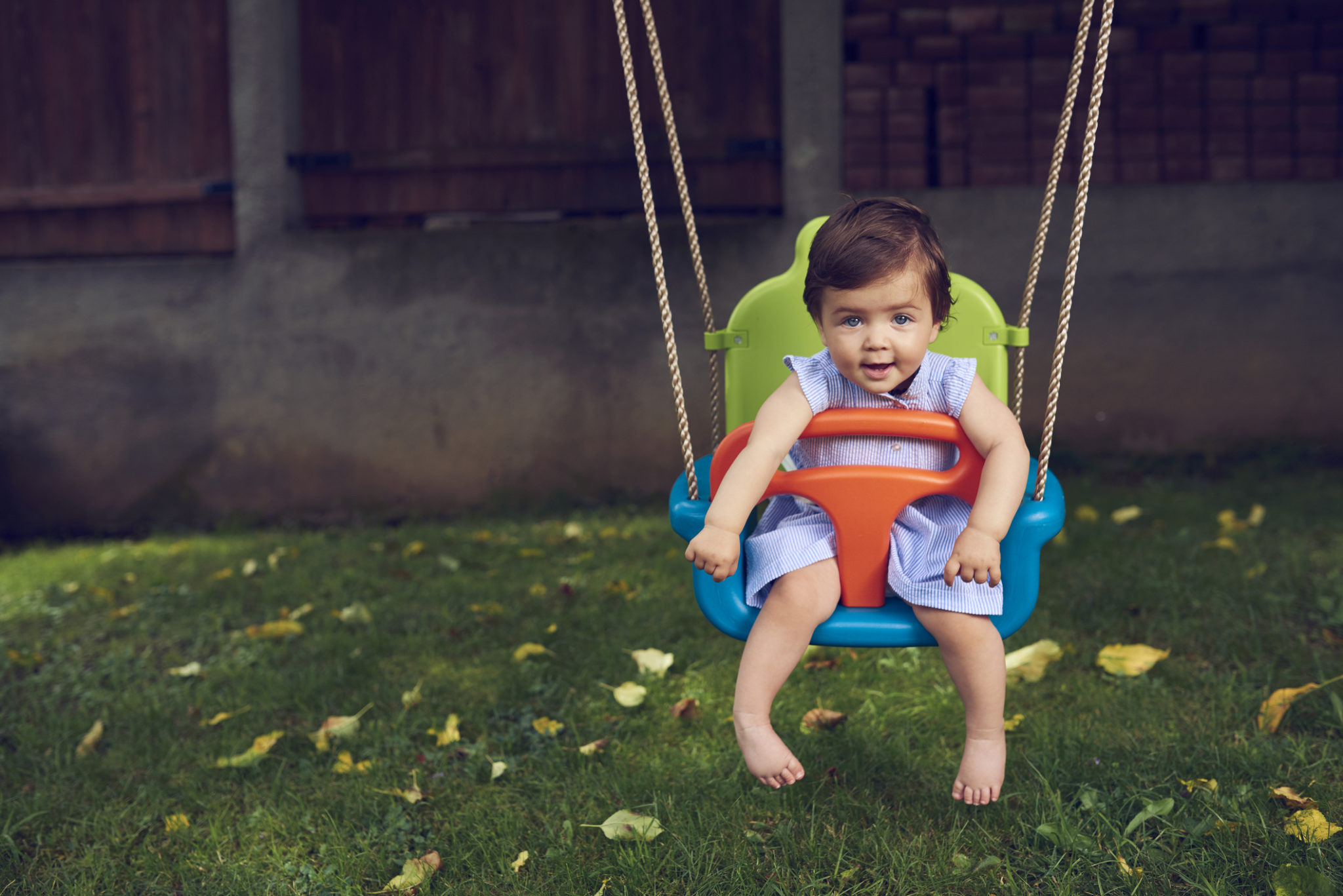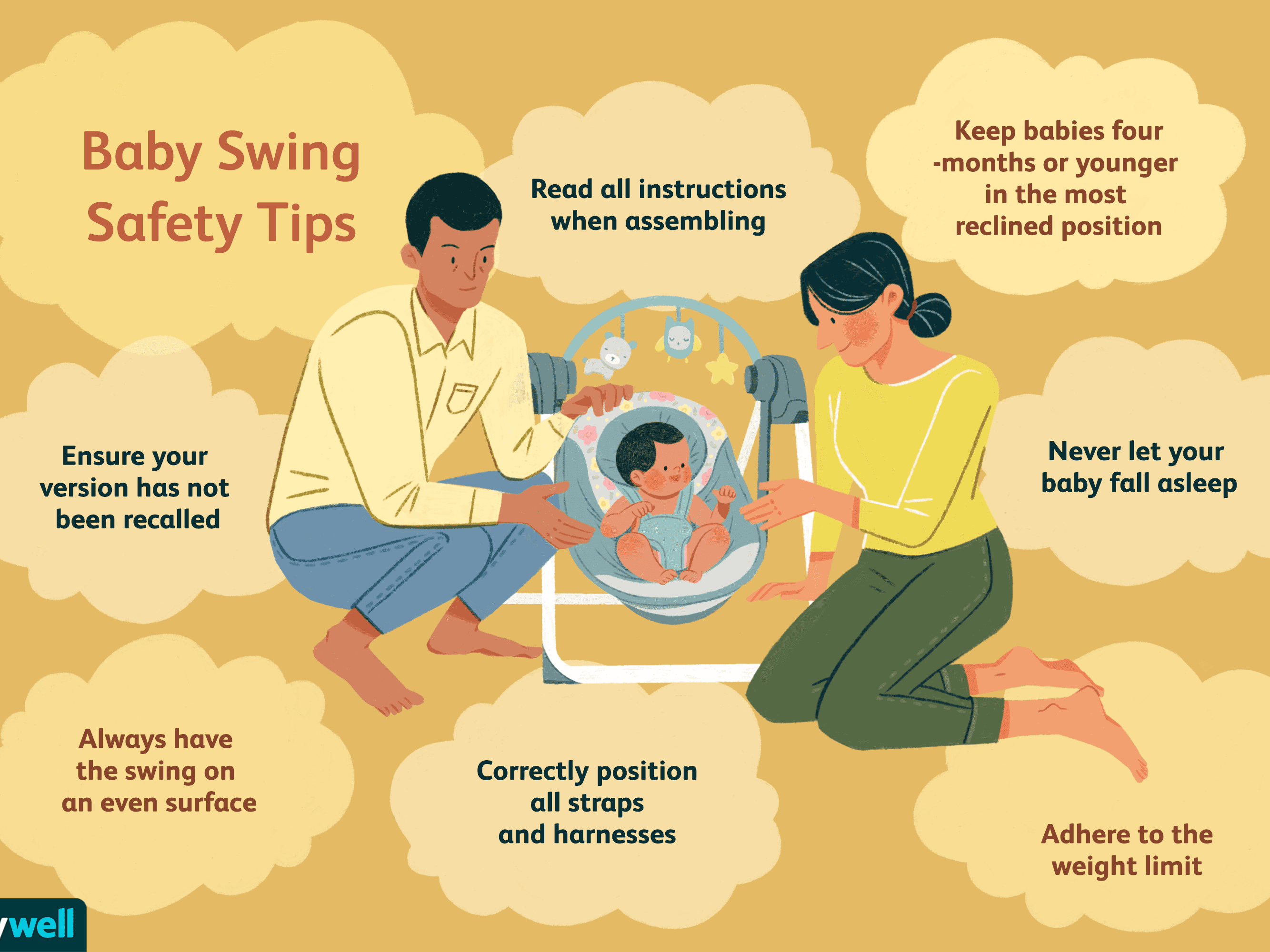
Having a baby can be the sweetest thing in the world, but it also comes with its fair share of challenges. One of the most common issues new parents face is their baby’s difficulty in falling asleep. Some babies seem to be born sleep junkies, while others hate the idea of sleep altogether. If your little one falls into the latter category, don’t worry, because you’re not alone!
Many parents have found that using a baby swing can be incredibly helpful in getting their little ones to sleep. Baby swings are designed to simulate the gentle rocking motion that babies find so comforting. The motion of a swing can lull even the most sleep-resistant baby into dreamland in no time. Plus, the added bonus of a soothing sound or music can further enhance your baby’s sleep experience.
So, should you rush out and buy a baby swing? Well, before you do, there are a few things to consider. Safety should always be your number one concern when it comes to your baby, so make sure you choose a swing that meets the highest safety standards. Look for a swing that has an adjustable harness to securely hold your baby, a sturdy frame that can handle the weight of your little one, and a motor that is quiet and reliable. It’s also worth considering the price and the durability of the swing, as you’ll want something that can last through many nights of sleep.
When using a swing, it’s important to remember that it should never be used as a long-term solution. While a swing can be a valuable tool for helping your baby sleep, it’s not meant to replace a safe and comfortable crib or bassinet. Your baby needs a consistent sleep environment to promote healthy sleep habits and reduce the risk of Sudden Infant Death Syndrome (SIDS). So, make sure to follow the guidelines provided by sleepbaby.org and always put your baby to sleep in a crib or bassinet that meets the safety standards.
If your baby is currently having issues with sleeping in a swing or does not seem comfortable in it, there are alternatives you can try. Swaddling your baby can provide a sense of security and mimic the feeling of being held, which may help them fall asleep more quickly. Some babies also find comfort in white noise, such as the sound of a fan or a noise machine. You can experiment with different methods to see what works best for your little one.
In conclusion, baby swings can be a helpful tool in getting your swing-hating baby to sleep. However, it’s important to use them responsibly and in combination with other sleep strategies. Always prioritize the safety and well-being of your baby and consult with your pediatrician if you have any concerns or questions. Remember, every baby is unique and what works for one may not work for another, so be patient and keep trying different methods until you find what works best for your little sleep-deprived bundle of joy!
Contents
The Ultimate Baby Swing Sleep Guide
Is your baby a swing-hating junkie? Do you wish they could just fall asleep without the constant rocking and vibrating? Sleepbaby.org is here to help address your concerns and provide you with valuable information on how to help your swing-hating baby sleep better.
First and foremost, it’s important to understand that not all babies are fans of swings. Some kids just don’t enjoy the motion or find it uncomfortable. Moreover, swings are not a magical solution to your baby’s sleep needs. They can be a helpful tool, but they’re not the only option.
When it comes to addressing your swing-hating baby’s sleep issues, there are a few strategies you can try:
1. Gradually introduce the swing
If your baby is currently having issues with the swing, try gradually introducing it into their sleep routine. Start by placing them in the swing while they’re sleepy but not yet fully asleep. This way, they can start associating the swing with falling asleep. Over time, you can increase the amount of time they spend in the swing.
2. Optimal swing settings
Make sure you have the swing set to the optimal settings for your baby’s comfort. Adjust the speed, motion, and intensity of the swing to find the right combination that helps your baby relax and fall asleep. Some babies prefer a gentle sway, while others enjoy a more vigorous motion.
3. Create a cozy sleeping environment
Ensure that your baby’s sleep space is comfortable and free from distractions. Use a swaddling technique to provide a sense of security and mimic the cozy feeling of being in the womb. You can also use white noise to create a soothing atmosphere that helps your baby relax and sleep better.
4. Introducing self-soothing techniques
Teach your baby self-soothing techniques to help them fall asleep without relying on the swing. Start by gradually reducing the amount of rocking and motion provided by the swing. Encourage your baby to find their own comfortable position and learn how to settle themselves to sleep. This will help them develop a healthy sleep association and promote better sleep habits.
Remember, a swing is just one tool that can help your baby sleep. It’s important to address any underlying issues or concerns about your baby’s sleep patterns. If you’re unsure about the impact of using a swing on your baby’s development or have any safety concerns, consult a pediatrician or child sleep specialist for guidance.
At the end of the day, every baby is different, and what works for one may not work for another. Listen to your baby’s cues and do what’s best for their sleep needs. Whether it’s finding an alternative sleep style or gradually weaning them off their swing dependency, take the time to understand your baby’s unique sleep preferences and provide them with the most optimal and safest sleep environment possible.
How to Help Your Swing-Hating Baby Sleep
One of the first steps you can take is to ensure that you have the right swing for your baby. Fisher is a trusted brand that offers a variety of swings designed to provide comfort and relaxation for your little one. Sleepbaby.org is also a great resource for finding helpful tips and advice on helping your baby sleep.
Sometimes, the position of the swing can make a big difference. Make sure the swing is positioned in a location where your baby feels safe and secure. Some babies may prefer to face forward, while others may feel more comfortable facing to the side. Experiment with different positions to see what works best for your baby.
Music can also be a helpful tool in getting your baby to sleep in the swing. Soft, soothing melodies can help calm and relax your baby, making it easier for them to fall asleep. Many baby swings come with built-in speakers or the option to attach an MP3 player to play your little one’s favorite lullabies.
While swings can be a great tool for getting your baby to sleep, it’s important not to rely on them too heavily. Babies need to learn how to self-soothe, and constant swinging can prevent them from developing these important skills. Gradually decrease the amount of time your baby spends in the swing each day to encourage self-soothing.
It’s also important to remember that swings should never be used as a replacement for the presence and attention of a caregiver. While they can provide short-term comfort and help your baby sleep, they should not be used as an isolation tool. Your baby needs and deserves your loving presence.
If your baby continues to resist the swing, there are alternatives you can try. Swaddling can provide a sense of security and comfort for your little one. Providing other calming items, such as a favorite blanket or stuffed animal, can also help create a soothing environment.
It’s also worth considering why your baby may dislike the swing. Some babies may find the straps uncomfortable or feel insecure in the fast-moving motion. Others may be overstimulated by the lights, sounds, and distractions of the swing. Understanding the reason behind your baby’s aversion can help you find a solution that works for them.
In some cases, a swing may not be the best option for your baby’s sleep needs. If your baby is experiencing increased insecurity or discomfort in the swing, it may be worth exploring other sleep strategies. For example, you could try holding your baby in a different position or using a different type of sleep aid, such as a bouncer or a baby hammock.
Ultimately, it’s important to prioritize your baby’s comfort, safety, and sleep needs. While swings can be a helpful tool in getting your baby to sleep, they are not the only solution. Be open to trying different methods and strategies until you find what works best for your little one. Remember, every baby is different, and what works for one may not work for another.
Remember, your ultimate goal is to provide a nurturing and soothing environment for your baby to sleep in. Whether that is in a swing, a crib, or in your arms, the most important thing is that your baby feels safe, loved, and comfortable. So don’t stress if your baby is a swing-hater – there are plenty of other options and strategies available to help your little one get the sleep they need!
Isolation and Insecurity

Some babies may not enjoy being in a swing because it can create a feeling of isolation and insecurity. They may wish to be held or be closer to their caregivers, and being in a swing can make them feel isolated and alone. This is especially true for newborns, who are used to being close to their mothers and are not yet comfortable with being on their own.
Currently, there are no comprehensive techniques or settings that can completely address a baby’s insecurity or their hatred of swings. However, there are some short-term techniques that may be helpful in easing a baby’s transition into using a swing.
Identifying the Cause
Before trying any new techniques or methods, it is important to identify the cause of the baby’s dislike for the swing. There could be multiple reasons why a baby does not like the swing, such as uncomfortable or wrong settings, feeling insecure without motion, or simply not liking the feeling of being kept down or confined.
Creating a Cozy Environment
To help your baby feel more secure and comfortable in the swing, you can try creating a cozy environment. This can be done by swaddling your baby in a soft and gentle blanket, or placing a white noise machine near the swing to mimic the sounds of the womb. These techniques can help create a calm and soothing atmosphere, increasing the chance of your baby falling asleep.
Keeping It Consistent

Consistency is key when trying to help your baby get used to the swing. By using the swing during consistent nap times and bedtime, your baby will start associating the swing with sleep. This can help them feel more secure and increase their likelihood of falling asleep in the swing.
In conclusion, addressing a baby’s insecurity and their hatred for swings can be a challenging task. While there are techniques that may be helpful in easing a baby’s transition into using a swing, there is no ultimate solution that works for every baby. It is important to be patient and understanding, and try different methods to find what works best for your baby.
